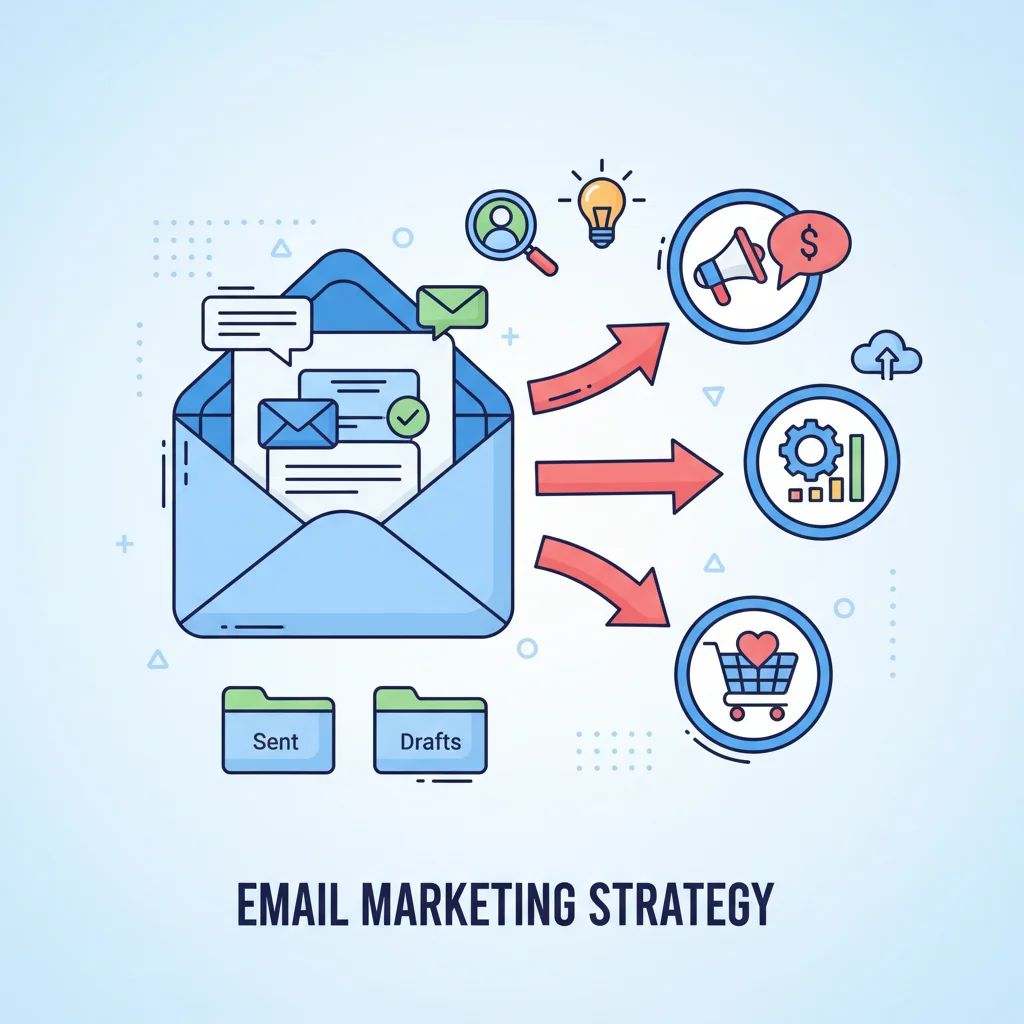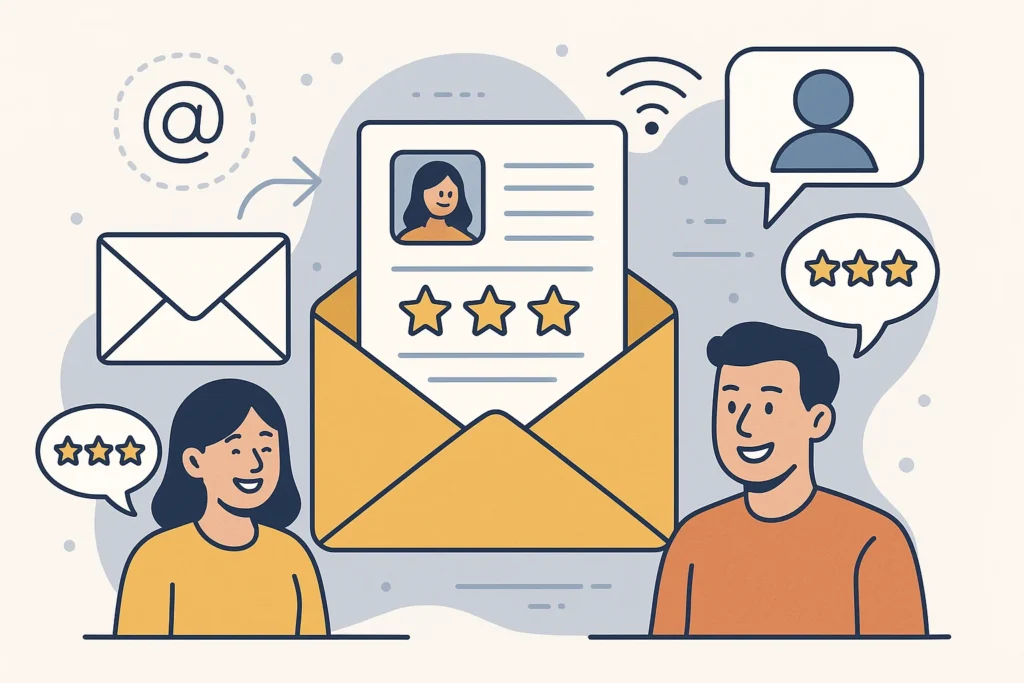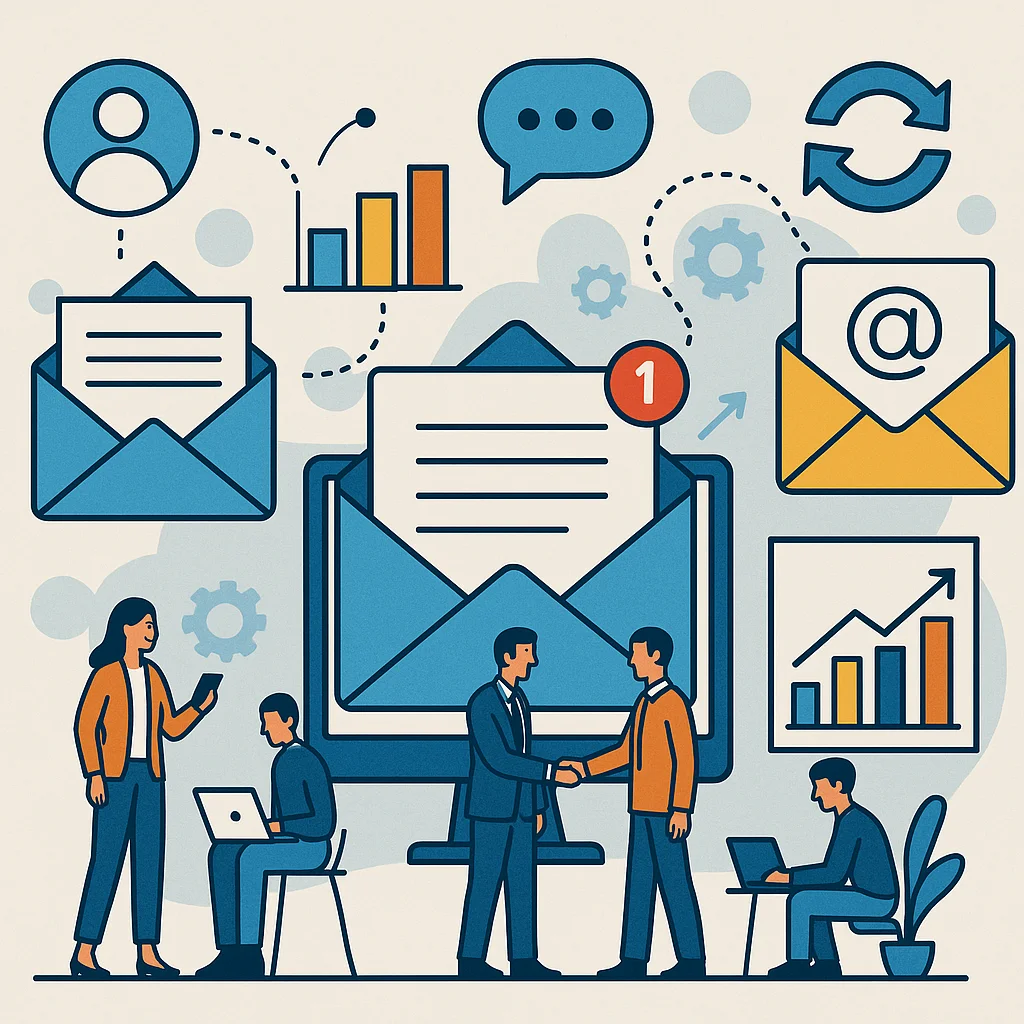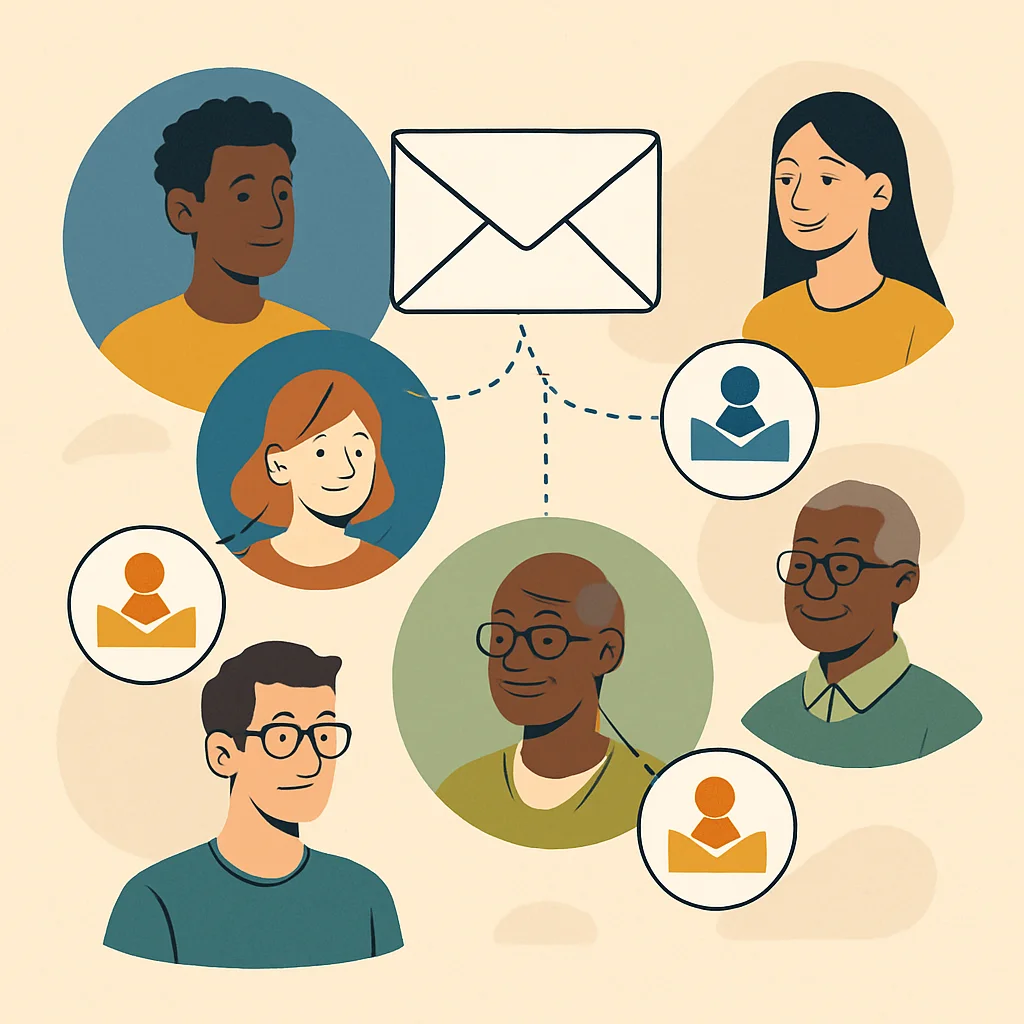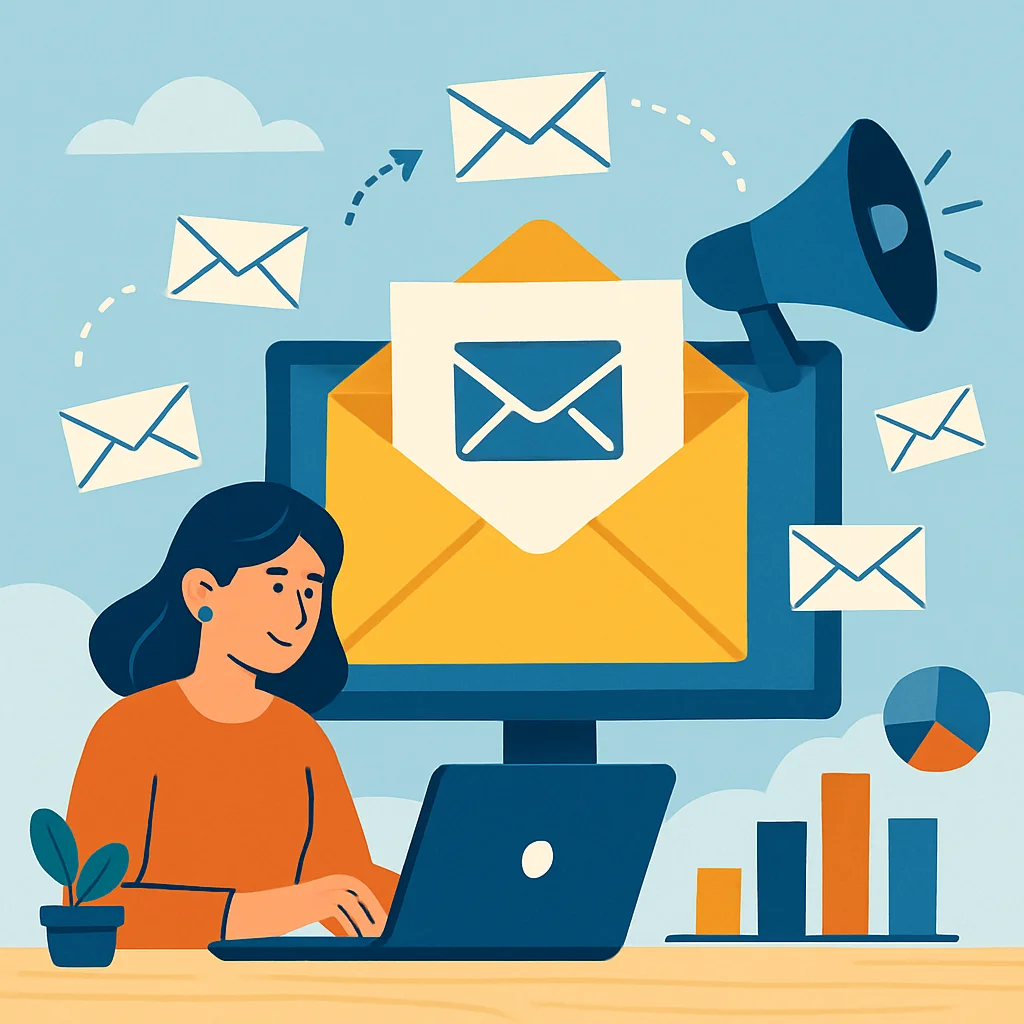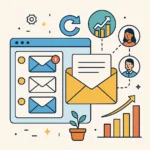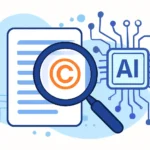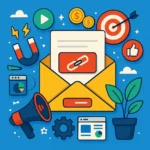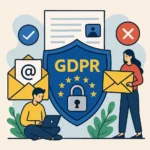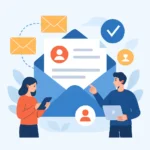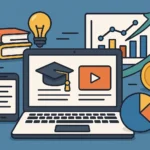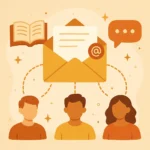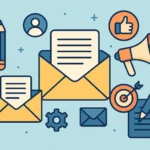Now Reading: 9 Effective Email Marketing Strategy That Actually Converts
-
01
9 Effective Email Marketing Strategy That Actually Converts
9 Effective Email Marketing Strategy That Actually Converts

Before I developed an effective email marketing strategy, my campaigns were glorified spam-low open rates, abysmal click-throughs, and definitely no sales. Now? My emails generate consistent revenue, build genuine relationships with subscribers, and drive business growth on autopilot. The bridge between these two realities wasn’t some magical software or expensive consultant-it was a systematic approach to creating an email strategy that connects with real humans. And I’m about to show you exactly how to build one.
Key Takeaways
- An effective email marketing strategy requires clear goals, defined audience segments, and valuable content that drives specific actions
- Start by establishing measurable objectives (sales, leads, engagement) and building a quality list of subscribers who’ve given explicit permission
- Segment your audience based on behavior, demographics, and preferences to deliver highly relevant content
- Create a consistent sending schedule with a mix of promotional and value-based content (aim for 80% value, 20% promotion)
- Optimize for mobile devices, personalize beyond just using names, and continuously test elements to improve performance
Setting Clear Goals For Your Email Marketing
You wouldn’t start a road trip without knowing where you’re going, right? Same goes for email marketing. Without clear goals, you’re just wandering around the digital landscape hoping to stumble upon results.
Define Your Primary Objectives
Before you write a single subject line, get crystal clear on what you want your emails to accomplish:
- Generate direct sales – Driving immediate purchases through promotional offers
- Nurture leads – Moving prospects closer to buying decisions
- Boost engagement – Increasing opens, clicks, and interactions
- Build relationships – Developing trust and loyalty with your audience
- Drive traffic – Sending subscribers to specific website content
I’ve found that the most successful email strategies focus on just 1-2 primary goals. Try to accomplish everything, and you’ll end up achieving nothing.
Set Measurable Targets
Vague goals lead to vague results. Instead, create specific targets like:
- Increase email revenue by 25% this quarter
- Boost average open rates from 18% to 25%
- Generate 50 qualified leads per month
- Improve click-through rates by 15%
These concrete numbers give you something to aim for and measure against. They also help you recognize when something’s working (or when it’s definitely not).
Building Your Email List The Right Way
Your email strategy is only as good as your list. A small, engaged list will outperform a massive list of uninterested subscribers every single time.
Quality Over Quantity
I learned this lesson the hard way. I once celebrated hitting 10,000 subscribers, only to discover my engagement rates were plummeting. Why? Because I’d focused on list size rather than list quality.
The truth is that email list building isn’t a numbers game. It’s about attracting people who genuinely want to hear from you.
Permission-Based List Building Tactics
Here are some ethical ways to grow your list with subscribers who actually want your emails:
- Create valuable lead magnets – Offer genuinely helpful resources (guides, templates, tools) in exchange for email addresses
- Use content upgrades – Provide additional content related to specific blog posts or resources
- Host webinars or events – Collect emails during registration for relevant online or in-person gatherings
- Run contests or giveaways – Ensure prizes attract your ideal audience (not just freebie-seekers)
- Optimize website sign-up forms – Place them strategically with compelling copy about the benefits of subscribing
One tactic that’s worked amazingly well for me is creating industry-specific templates. These practical resources attract exactly the kind of subscribers who will engage with my future emails.
The Double Opt-In Advantage
I always recommend using double opt-in for new subscribers. Yes, it adds an extra step, but it ensures you’re building a list of people who really want your content.
With double opt-in:
- Subscribers confirm their interest by clicking a verification link
- List quality improves dramatically
- Spam complaints decrease
- Deliverability rates increase
This small friction upfront creates a much more engaged list long-term.
Useful Articles:
Understanding Your Audience Deeply
The most effective email marketing strategy starts with a deep understanding of who you’re talking to. Not surface-level demographics-I’m talking about really getting who these people are.
Create Detailed Subscriber Personas
Go beyond basic information and develop comprehensive profiles:
- What keeps them up at night?
- What are their biggest challenges related to your industry?
- What language do they use to describe their problems?
- Where do they want to be in 1-3 years?
- What solutions have they already tried?
I create actual character profiles for my key audience segments, complete with names and backstories. It sounds silly, but it helps me write emails that feel personally crafted for real humans.
Segmentation: The Secret Weapon
Mass emails to your entire list are rarely effective. Segmentation lets you deliver relevant content to specific groups:
- Behavioral segmentation – Based on how subscribers interact with your emails or website
- Demographic segmentation – Based on age, location, job title, etc.
- Purchase history – Based on what they’ve bought (or haven’t bought)
- Engagement level – Based on how frequently they open and click
- Entry point – Based on how they joined your list
Even simple segmentation can dramatically improve results. For example, I increased a client’s email revenue by 34% just by creating separate flows for first-time buyers versus repeat customers.
Crafting Your Email Content Strategy
Now for the fun part-deciding what to actually send to your subscribers!
The Content Mix Formula
A balanced email content strategy typically includes:
- Educational content – Teaching subscribers something valuable
- Entertaining content – Engaging stories or interesting information
- Inspirational content – Success stories and motivational messages
- Promotional content – Direct sales messages and offers
I follow the 80/20 rule: 80% value-focused content, 20% promotional content. This builds trust and makes subscribers more receptive when you do make offers.
Content Types That Drive Engagement
Some email content formats consistently perform better than others:
- How-to guides and tutorials – Practical, actionable advice
- Behind-the-scenes content – Authentic glimpses into your process
- Case studies and success stories – Real results from real people
- Curated resources – Valuable industry information collected in one place
- Personal stories – Authentic experiences that relate to your audience
One of my highest-performing emails ever was a simple behind-the-scenes look at how I structured my workday. It generated tons of replies because it felt human and relatable.
Creating a Content Calendar
Random, sporadic emails scream “amateur hour.” A content calendar helps you:
- Maintain consistent sending frequency
- Balance different content types
- Align emails with broader marketing initiatives
- Plan ahead for important dates and promotions
I use a simple spreadsheet with columns for date, email type, subject line, main content focus, and call to action. Nothing fancy, but it keeps me organized and consistent.
Designing Emails That Get Results
The visual presentation of your emails matters-but probably not in the way you think.
Simple Beats Fancy (Almost Always)
I’ve tested countless email designs, and here’s what I’ve learned: simpler emails typically outperform complex, highly designed templates.
Why? Because simple emails:
- Look more personal and less “marketing-y”
- Load faster across all devices
- Focus attention on your message, not your design
- Have fewer elements that could break or display incorrectly
This doesn’t mean ugly emails-it means clean, focused designs that support your message rather than distract from it.
Mobile Optimization Is Non-Negotiable
Over 60% of email opens now happen on mobile devices. If your emails look terrible on phones, you’re alienating the majority of your audience.
Mobile optimization essentials:
- Single-column layouts
- Larger font sizes (min 14px for body text)
- Buttons large enough to tap with a finger (min 44×44 pixels)
- Plenty of white space
- Compressed images for faster loading
I always send test emails to myself and check them on both my phone and computer before scheduling campaigns.
The Anatomy of High-Converting Emails
Effective emails typically follow this structure:
- Attention-grabbing subject line – Clear, specific, and intriguing
- Personalized greeting – Using the subscriber’s name when possible
- Strong opening line – Hooks the reader immediately
- Scannable body content – Short paragraphs, bullets, bold text for key points
- Relevant images – Only if they enhance the message
- Clear call-to-action – Obvious next step for the reader
- Simple signature – Personal touch that builds connection
Remember that every element should serve your email’s primary purpose. If something doesn’t contribute to your goal, cut it.
Useful Articles:
Writing Subject Lines That Get Opens
Your subject line has one job: get the email opened. Everything else is irrelevant if this doesn’t happen.
The Psychology Behind High-Open Subject Lines
The best subject lines trigger emotional responses:
- Curiosity – “The unexpected reason your emails are being ignored”
- Fear of missing out – “Last chance: This offer disappears tonight”
- Personal benefit – “5 templates to cut your workload in half”
- Urgency – “Quick response needed: Your account status”
- Social proof – “See why 1,243 marketers use this strategy”
I’ve found that curiosity-based subject lines consistently perform best for educational content, while benefit-focused lines work better for promotional emails.
Subject Line Formulas That Work
When I’m stuck, I use these proven formulas:
- How-to: “How to [achieve desired outcome] without [common pain point]”
- Question: “Are you making these [topic] mistakes?”
- List: “[Number] proven ways to [achieve desired outcome]”
- Problem-solver: “The solution to [common problem]”
- Announcement: “Introducing: [new thing] that [delivers benefit]”
For example, “How to double your email opens without spending more time writing” or “Are you making these 5 email marketing mistakes?”
A/B Testing Subject Lines
Never rely on guesswork when it comes to subject lines. I always test at least two versions to see what resonates with my audience.
Some elements worth testing:
- Length (short vs. long)
- Including numbers vs. not
- Questions vs. statements
- Using emoji vs. plain text
- Personal tone vs. professional tone
Even small tests can reveal big insights about what makes your specific audience click.
Personalization Beyond First Names
Basic personalization (Hi [First Name]!) is table stakes nowadays. To create an effective email marketing strategy, you need to go deeper.
Behavioral Personalization
Use subscriber actions to tailor your messages:
- Products they’ve viewed but not purchased
- Content topics they’ve engaged with most
- Time of day they typically open emails
- Frequency of their purchases
- Pages they’ve visited on your website
One of my clients increased conversions by 41% by simply sending cart abandonment emails that featured the exact products customers had left behind.
Contextual Personalization
Adapt your messaging based on:
- Geographic location and local events
- Weather conditions in their area
- Recent interactions with your brand
- Stage in the customer journey
- Seasonal relevance
For example, I once segmented a campaign based on local weather forecasts-sending “rainy day activities” content to regions expecting rain and “outdoor fun” content to areas with sunshine. The relevance drove engagement through the roof.
Dynamic Content Blocks
Advanced email platforms allow you to show different content to different subscribers within the same email:
- Product recommendations based on past purchases
- Location-specific offers or event information
- Content tailored to industry or job role
- Different messaging based on customer status
This lets you send one campaign that feels individually tailored to each recipient.
Creating Effective Email Sequences
One-off emails have their place, but the real power of email marketing lies in thoughtfully designed sequences.
Welcome Sequence
Your welcome sequence sets the tone for your entire email relationship:
- Immediate welcome – Deliver promised content, set expectations
- Brand story – Share your why and build connection
- Educational value – Deliver quick win or useful information
- Social proof – Show results others have achieved
- Soft offer – Introduce relevant product/service
A good welcome sequence doesn’t just introduce new subscribers to your brand-it conditions them to open and engage with future emails.
Nurture Sequences
Nurture sequences gradually build trust and move subscribers toward a purchase decision:
- Focus on solving problems related to your offerings
- Address common objections before they arise
- Share case studies and success stories
- Provide valuable content that demonstrates your expertise
- Gradually increase the selling intensity
I typically create nurture sequences with 5-7 emails spaced 2-3 days apart, with each email building on the previous one.
Sales Sequences
When it’s time to make offers, structured sales sequences convert best:
- Problem/solution email – Highlight the pain point and hint at solution
- Introduction email – Announce your offering and its key benefits
- Detailed benefits email – Deep dive into how it solves their problems
- Social proof email – Share testimonials and results
- Objection crusher – Address common concerns
- Scarcity/urgency email – Create legitimate reason to act now
- Last chance email – Final reminder before opportunity ends
The key is making each email valuable even to non-buyers. This maintains list health even during promotional periods.
Useful Articles:
Automation: Setting Up Email Marketing on Autopilot
Email automation is like hiring a tireless team member who works 24/7 delivering the right messages at exactly the right time.
Trigger-Based Emails
Set up automated emails triggered by specific subscriber actions:
- Welcome emails – Triggered by new sign-ups
- Abandoned cart emails – Triggered when someone leaves items in cart
- Post-purchase sequences – Triggered after completing an order
- Re-engagement emails – Triggered after period of inactivity
- Birthday/anniversary emails – Triggered by special dates
These behavior-triggered emails typically see 5-10x higher engagement than regular broadcasts because they’re timely and relevant.
Lifecycle Automation
Create automation paths based on where subscribers are in their journey:
- New subscriber path – Introduction to your brand and offerings
- Engaged non-customer path – Nurturing toward first purchase
- First-time customer path – Enhancing satisfaction and encouraging reviews
- Repeat customer path – Cross-selling and loyalty building
- Lapsed customer path – Re-engagement and win-back campaigns
I map these journeys visually before building them in my email platform, ensuring each path makes logical sense.
Setting Up Automation Rules
Effective automation relies on clear “if this, then that” logic:
- If subscriber clicks link about Topic A, tag them as interested in Topic A
- If subscriber purchases Product X, remove them from the Product X sales sequence
- If subscriber hasn’t opened last 5 emails, move to re-engagement campaign
- If subscriber visits pricing page but doesn’t purchase, send follow-up email
These rules create a dynamic system that responds to subscriber behavior automatically.
Testing and Optimization
An effective email marketing strategy is never “set it and forget it.” Continuous testing and optimization are essential.
What to Test (Beyond Subject Lines)
While subject lines are important, test these elements too:
- Send times – Day of week and time of day
- Email length – Short vs. long-form content
- Call-to-action placement – Top, middle, or bottom of email
- Button vs. text links – Which drives more clicks
- Content formats – Text-only vs. images vs. video thumbnails
- Personalization levels – Basic vs. advanced personalization
I recommend testing one element at a time so you can clearly identify what impacts performance.
Split Testing Methodology
Follow these steps for meaningful tests:
- Form a clear hypothesis (e.g., “Emails sent on Tuesday will get higher open rates than those sent on Thursday”)
- Test with a large enough sample size (at least 1,000 subscribers per variant)
- Run the test long enough to be statistically significant
- Document results and insights
- Implement winning version
- Test something new
Small improvements compound over time. A 5% increase in open rates, combined with a 5% increase in click rates and a 5% increase in conversion rates, results in a 15.8% overall improvement.
Analyzing Email Performance Metrics
Focus on these key metrics:
- Open rate – Percentage of recipients who open your email
- Click-through rate (CTR) – Percentage who click on links
- Conversion rate – Percentage who complete desired action
- Unsubscribe rate – Percentage who opt out
- Revenue per email – Total revenue divided by emails sent
Look beyond surface metrics to deeper insights. For example, an email with lower open rates but higher conversion rates may actually be more valuable than one with high opens but few conversions.
Maintaining List Health and Deliverability
Even the best email strategy fails if your messages don’t reach inboxes. List hygiene is crucial for deliverability.
Regular List Cleaning
Periodically remove:
- Inactive subscribers (no opens in 3-6 months)
- Hard bounces (invalid email addresses)
- Spam complainers
- Role-based addresses (info@, sales@, etc.)
I clean my lists quarterly and typically remove 5-10% of subscribers each time. Counter-intuitive as it seems, smaller, cleaner lists almost always outperform larger, neglected ones.
Re-engagement Campaigns
Before removing inactive subscribers, try to win them back:
- Send a “We miss you” email with special offer
- Try a different content approach than your usual emails
- Ask directly if they want to stay subscribed
- Provide easy one-click unsubscribe option
I’ve recovered up to 15% of inactive subscribers with well-crafted re-engagement campaigns.
Deliverability Best Practices
Protect your sender reputation with these practices:
- Use double opt-in – Ensures subscribers actually want your emails
- Maintain consistent sending volume – Sudden spikes look suspicious
- Authenticate your emails – Implement SPF, DKIM, and DMARC
- Monitor engagement metrics – Low engagement hurts deliverability
- Honor unsubscribes immediately – Legal requirement and best practice
Remember that deliverability is earned, not given. Every email you send either builds or damages your sender reputation.
Integrating Email With Your Overall Marketing Strategy
Email marketing doesn’t exist in isolation. An effective strategy integrates with your broader marketing efforts.
Multi-Channel Coordination
Coordinate email with other channels for maximum impact:
- Promote social media content via email
- Follow up webinar registrations and attendees with targeted emails
- Support product launches with coordinated email sequences
- Retarget email subscribers with matching social media ads
- Drive email sign-ups from social platforms and paid advertising
I’ve found that coordinated multi-channel campaigns typically generate 3-4x better results than single-channel efforts.
CRM Integration
Connect your email platform with your CRM to:
- Sync customer data across systems
- Trigger emails based on CRM activities
- Track the customer journey across touchpoints
- Personalize emails based on complete customer history
- Measure true ROI of email campaigns
This integration gives you a complete view of how email influences the entire customer relationship.
Content Repurposing
Work smarter by repurposing content across channels:
- Turn blog posts into email newsletters
- Convert webinar content into email courses
- Transform customer questions into FAQ emails
- Use social media engagement data to guide email topics
- Repurpose email content for social posts
This approach creates content efficiency while maintaining consistent messaging across channels.
Creating an effective email marketing strategy isn’t about following rigid rules – it’s about understanding fundamental principles and adapting them to your unique audience and business goals. The strategies I’ve shared work across industries, but the most successful email marketers are those who test, learn, and continuously refine their approach.
I hope this guide helps you transform your email marketing from an afterthought into a core driver of your business growth. Your subscribers’ inboxes are waiting!


